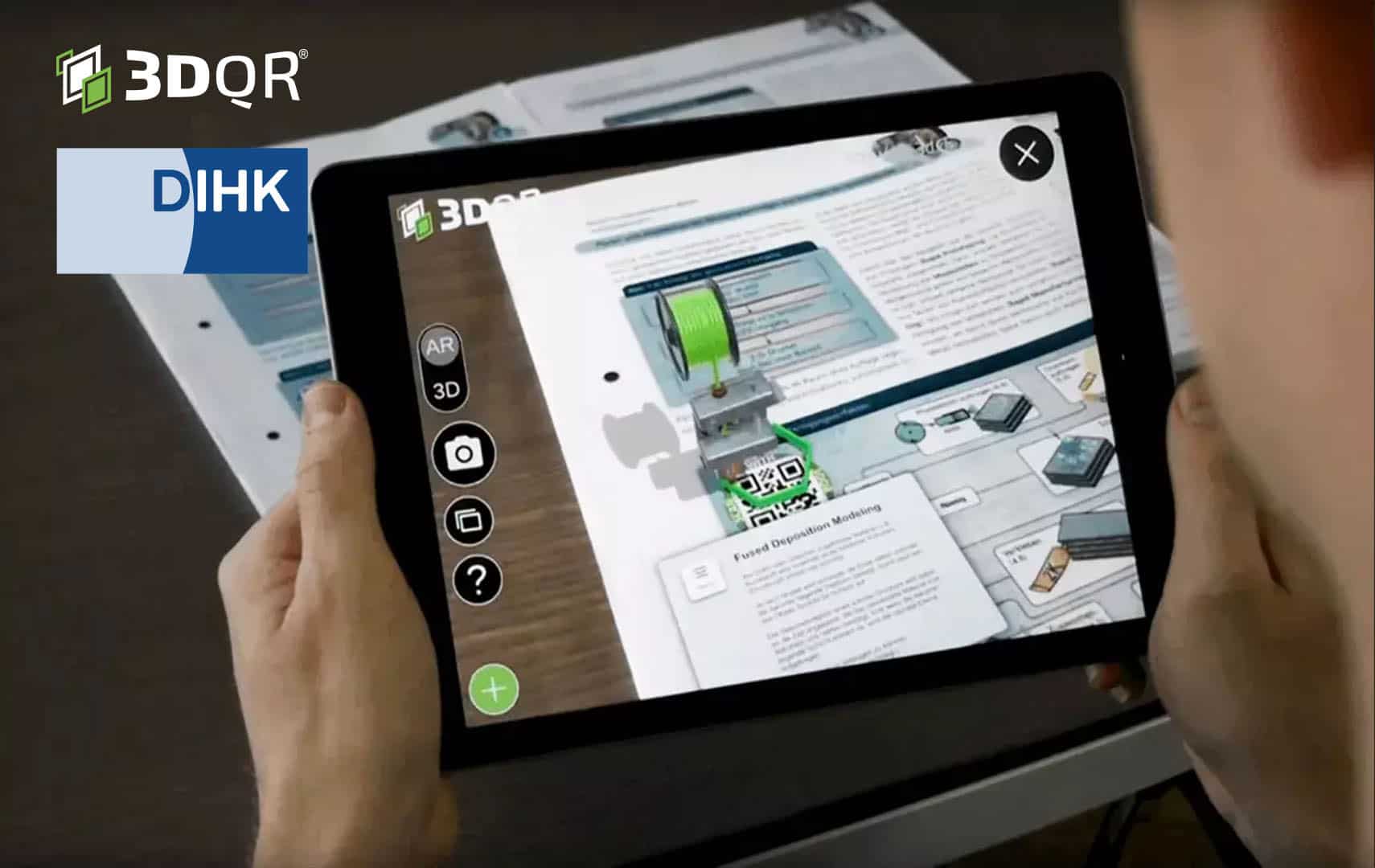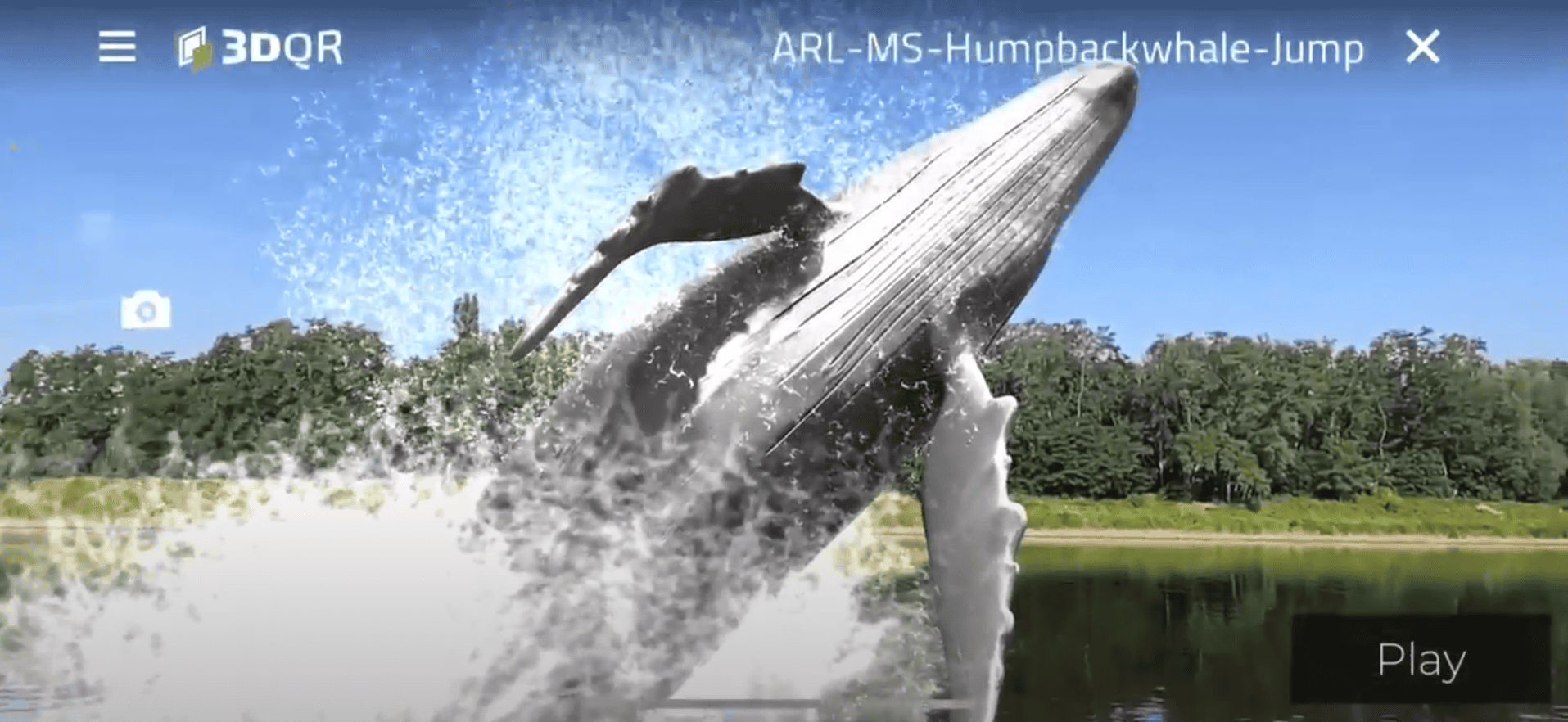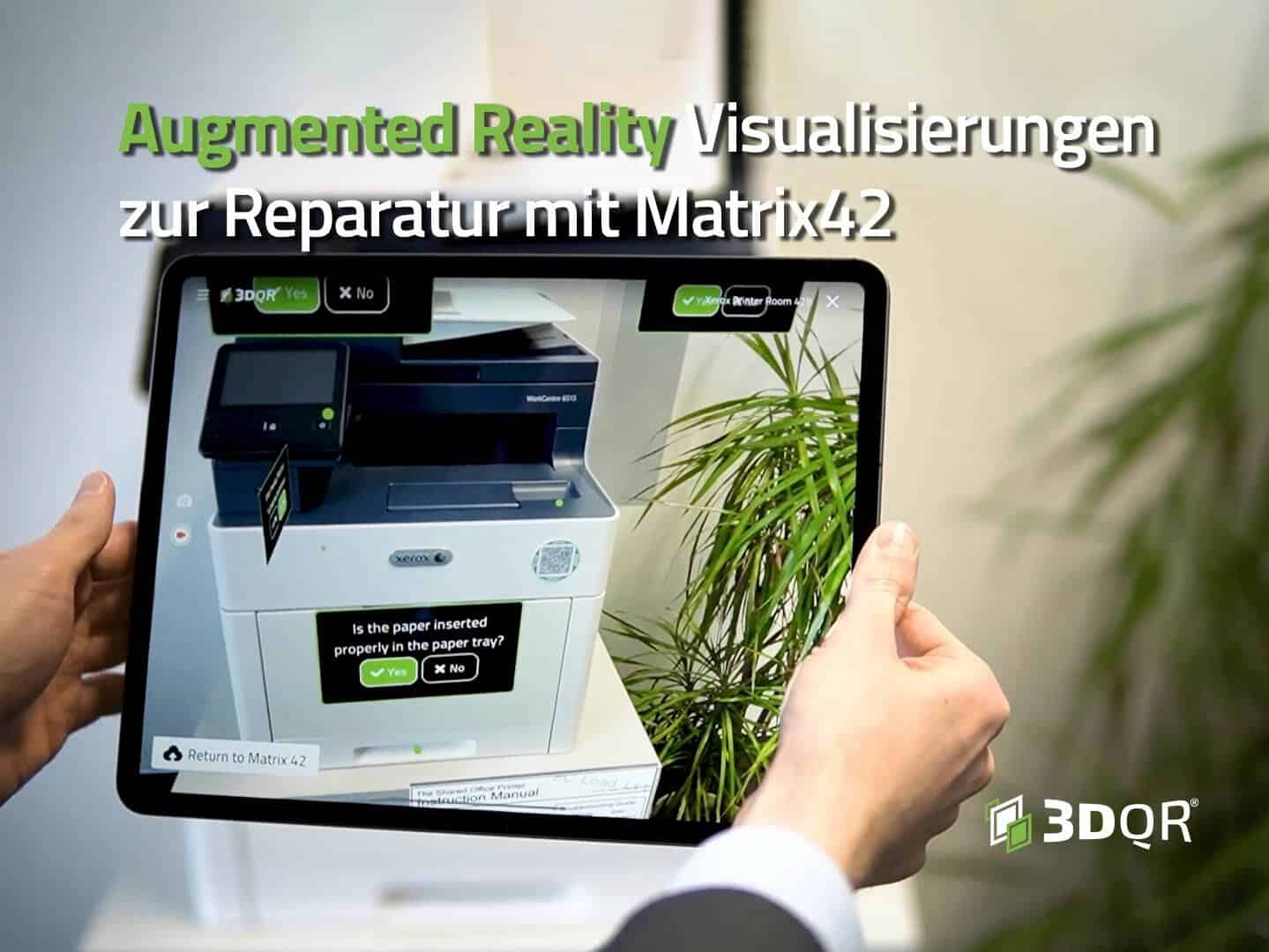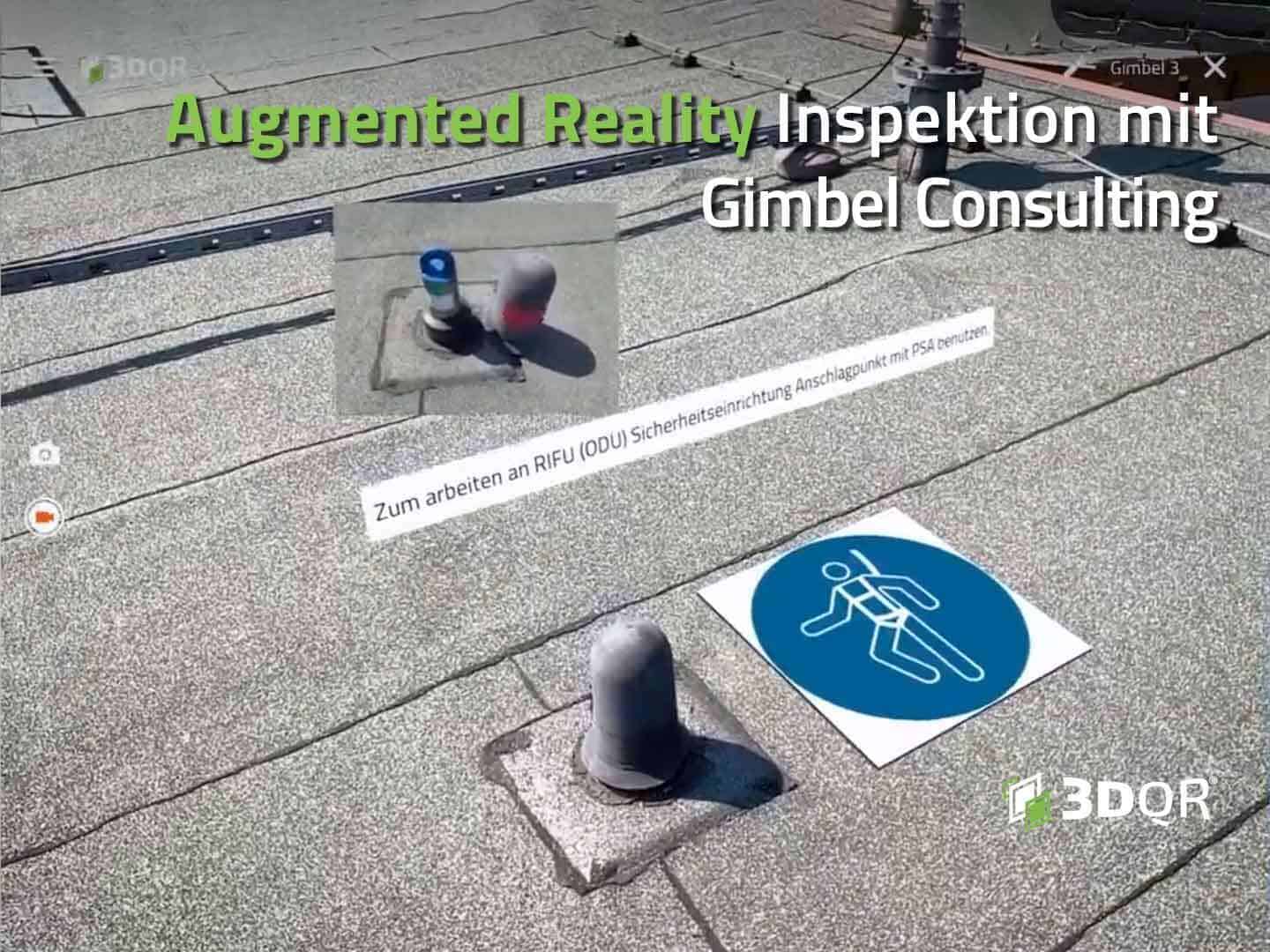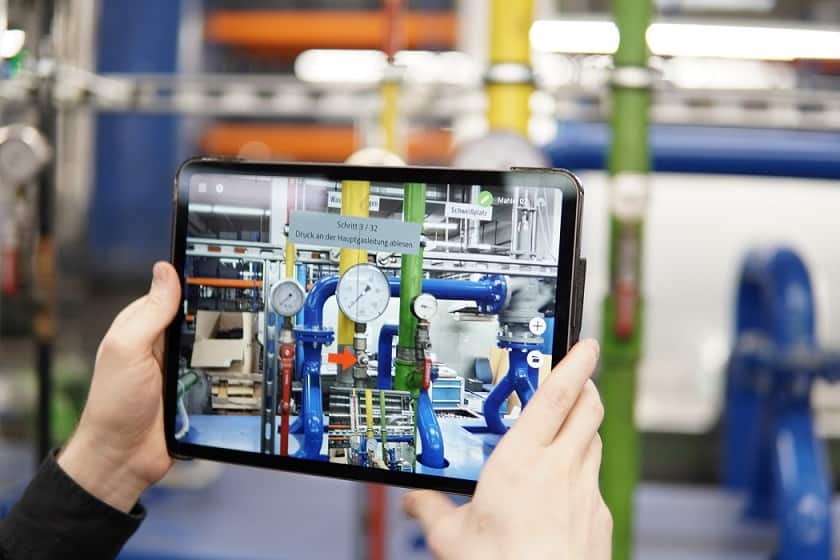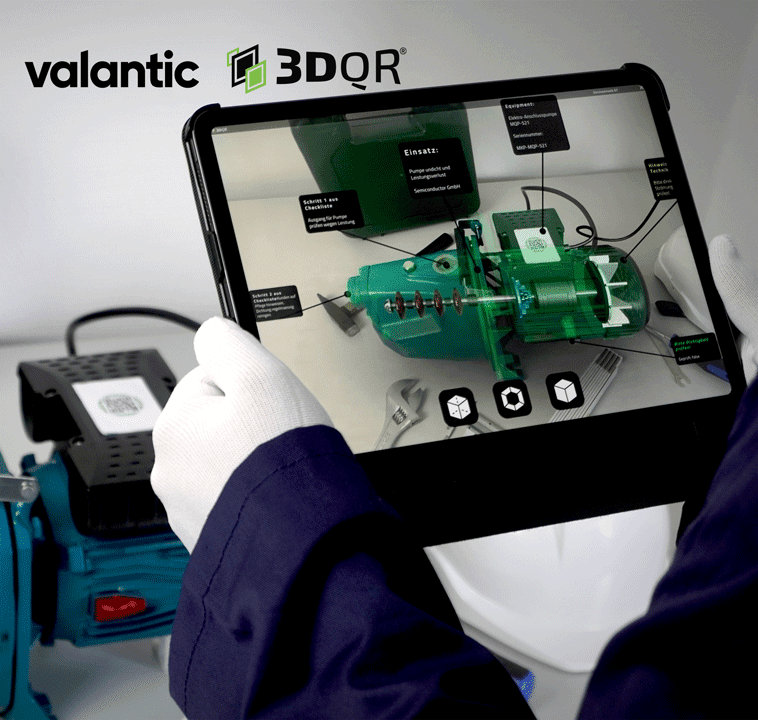“Highly intelligent, very digital, very modern but also very easy to use”
The Association of German Chambers of Industry and Commerce (Deutscher Industrie- und Handelskammertag – DIHK) is an association of 79 German chambers of industry and commerce and sets itself the task of promoting cooperation between them and encouraging the regular exchange of experience. On behalf of the individual chambers DIHK-Bildungs-GmbH develops vocational training and continuing education products and services. Among these are the textbooks and exercise materials for the IHK exam preparation.
In a cooperation with 3DQR, teaching materials were provided with 3DQR codes to make the educational measures more descriptive and to support the participants in their learning process with visual and interactive elements.
Dr. Stefan Scharf is a full-time research assistant at the University of Magdeburg and a part-time lecturer at the Chamber of Industry and Commerce. There, he teaches the subject of certified industrial foremen in the field of metal with a focus on production technology.
“[Bringing conventional text to life and letting representations come out of the standard work lends itself to teacher training, it almost imposes itself.]” (translated from German)
– Dr. Stefan Scharf
For the DIHK education project, we visualized machines and work processes and brought them into the textbooks with the help of QR codes. With augmented reality, we had the opportunity to create a completely new form of learning, with which the trainees can prepare even better for his seminar at home.
“[When I first saw the 3DQR codes I was immediately hooked, for a very simple reason: it’s a technology you can understand very quickly without being an IT specialist, it works on the design level and has a very high technical level but you don’t need in-depth IT or digital know-how. Apart from the equipment you have at hand anyway, you don’t need any additional equipment.]” (translated from German)
-Dr. Friedhelm Rudorf
Dr. Friedhelm Rudorf is Managing Director of DIHK-Bildungs-GmbH and was the decision-maker in the joint project.
“[I’ll say this [about 3DQR technology]: Highly intelligent, very digital, very modern but also very easy to use.
That convinced me immediately.]”
-Dr. Friedhelm Rudorf
Martin Schreier, among others, was entrusted with this project. He had been working at 3DQR for a little over a year at that time and is the lead 3D artist. The visualizations he created with his team of 3D artists formed the basis of the high-end augmented reality scenes in the DIHK books.
“[It’s not about doing away with printed teaching materials, but it’s meant to be a supplement. You have printed and you have three-dimensional and especially with 3DQR this connection is so ingenious. I don’t have a media break. I’m in the printed text volume and then I can go into the digital world via the code. Via my smartphone, for example, and then I have the digital added value. That’s what participants will really appreciate when we execute the whole concept.]” (translated from German)
-Dr. Friedhelm Rudorf
To access the AR scenes, students just need to open the relevant page and then scan the QR code using their smartphone or tablet. Then they will see the virtual scene in front of them, which will help them better prepare for the lesson.
“[Knowing this technology and also the idea of 3DQR setting up a project [was great] and finding the use case went pretty quickly. And I also think that the [project] has pretty great opportunities and great potential to make the whole thing more interesting and more experiential as well.]” (translated from German)
– Dr. Stefan Scharf
DIHK’s augmented textbooks represent a major step toward digitization in the education sector. We have made it our mission to make augmented reality available wherever people can benefit from the technology.
